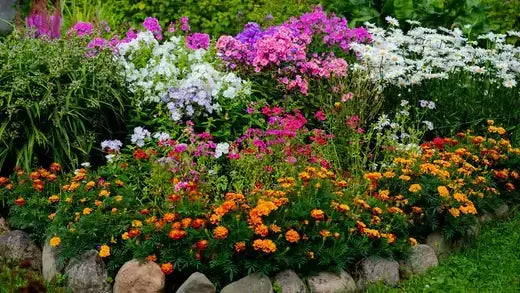Perennial plants are a valuable addition to any garden or landscape
As the seasons change, so do the needs of these plants, and autumn is a critical time for their care and maintenance.
In this guide, we will explore the various value of planting perennial plants during the fall season, providing a wealth of information to help you nurture your perennial garden successfully.
1. Watering Needs: Reduction in Frequency: As temperatures drop in autumn, the water requirements of perennial plants change. Generally, you'll want to reduce the watering frequency compared to the hot summer months. However, this doesn't mean you should neglect watering entirely. Perennials still need consistent moisture to prepare for winter. Deep Watering: Instead of frequent shallow watering, focus on deep, thorough watering sessions. This encourages the plant's roots to go deeper into the soil, making them more resilient to winter cold and frost.
2. Soil Preparation: Mulching: Mulch helps regulate soil temperature, conserve moisture, and suppress weed growth. It also acts as an insulating blanket, protecting the roots from extreme temperature fluctuations. Fertilization: Depending on your soil's condition and the specific needs of your perennials, you may consider applying a balanced, slow-release fertilizer in early autumn. This provides essential nutrients for root development during the dormant season.
3. Pruning and Deadheading: Cut Back Spent Blooms: Deadheading, or removing faded flowers, encourages some perennial plants to produce new blooms in the late summer or early autumn. Additionally, it prevents the plant from expending energy on seed production, which can be particularly beneficial for long-blooming perennials. Selective Pruning: While many perennials may not require extensive pruning in the fall, some benefit from selective trimming. Removing dead or diseased growth helps improve overall plant health and appearance. Be sure to research specific pruning requirements for your perennials, as some may prefer to be pruned in the spring.
4. Pest and Disease Management: Inspect Regularly: Autumn is an ideal time to inspect your perennial plants for signs of pests or diseases. Look for symptoms such as yellowing leaves, unusual spotting, or evidence of insect infestations. Promptly address some issues to prevent them from overwintering and becoming more significant problems in the spring. Clean Up Debris: Fallen leaves and decaying plant material can harbor pests and diseases. Cleaning up your garden in the fall reduces the risk of these issues persisting into the next growing season.
5. Protecting Perennials from Frost: Cover Tender Perennials: If you live in an area with late autumn frosts, consider covering tender perennials with frost cloth or blankets overnight when frost is forecasted. This protection can extend their growing season and prevent frost damage. Move Potted Perennials: If you have potted perennials, bring them indoors or into a sheltered area to protect them from freezing temperatures.
6. Divide and Transplant: Autumn Division: Fall is an excellent time to divide and transplant certain perennial plants that have become overcrowded or need rejuvenation. The cooler temperatures and moist soil provide an optimal environment for root establishment. Proper Technique: Follow appropriate division and transplanting techniques to minimize plant stress. Water thoroughly after transplanting to settle the soil around the roots.
7. Prepare for Winter Dormancy: Reduce Fertilization: As the growing season winds down, gradually reduce or cease fertilization to allow the plants to enter dormancy naturally. Leave Some Stems: While cleaning up garden debris is essential, consider leaving some dried stems and seed heads intact, as they can provide winter interest and food for birds.
8. Monitor Weather Conditions: Stay Informed: Maintenance an eye on weather forecasts, especially in regions with unpredictable fall weather. Sudden temperature drops or heavy early snowfalls can catch you off guard, potentially damaging your perennials. Cover Vulnerable Plants: When severe weather is expected, covering vulnerable perennials with burlap or other protective materials can help shield them from extreme conditions.
9. Wildlife Considerations: Deer and Rabbit Protection: In some areas, deer and rabbits can be active in the fall, nibbling on your perennials. Consider installing protective fences or repellents to deter wildlife from feeding on your plants.
10. Record Keeping: Garden Journal: Maintain a garden journal or digital record of your perennial garden's progress throughout the fall. Note when you performed specific tasks, observed plant health changes, or adjusted your care routine. This information can be invaluable for planning future seasons.
Conclusion
Autumn is a critical time for tending to the needs of perennial plants. By adjusting your watering, soil preparation, pruning, pest management, and protection strategies, you can help your perennials thrive and prepare for the challenges of winter dormancy. Remember that the specific requirements of your perennial plants may vary, so it's essential to research and understand the unique needs of each species in your garden. With proper care, your perennial garden can flourish year after year, bringing beauty and joy to your outdoor space.



